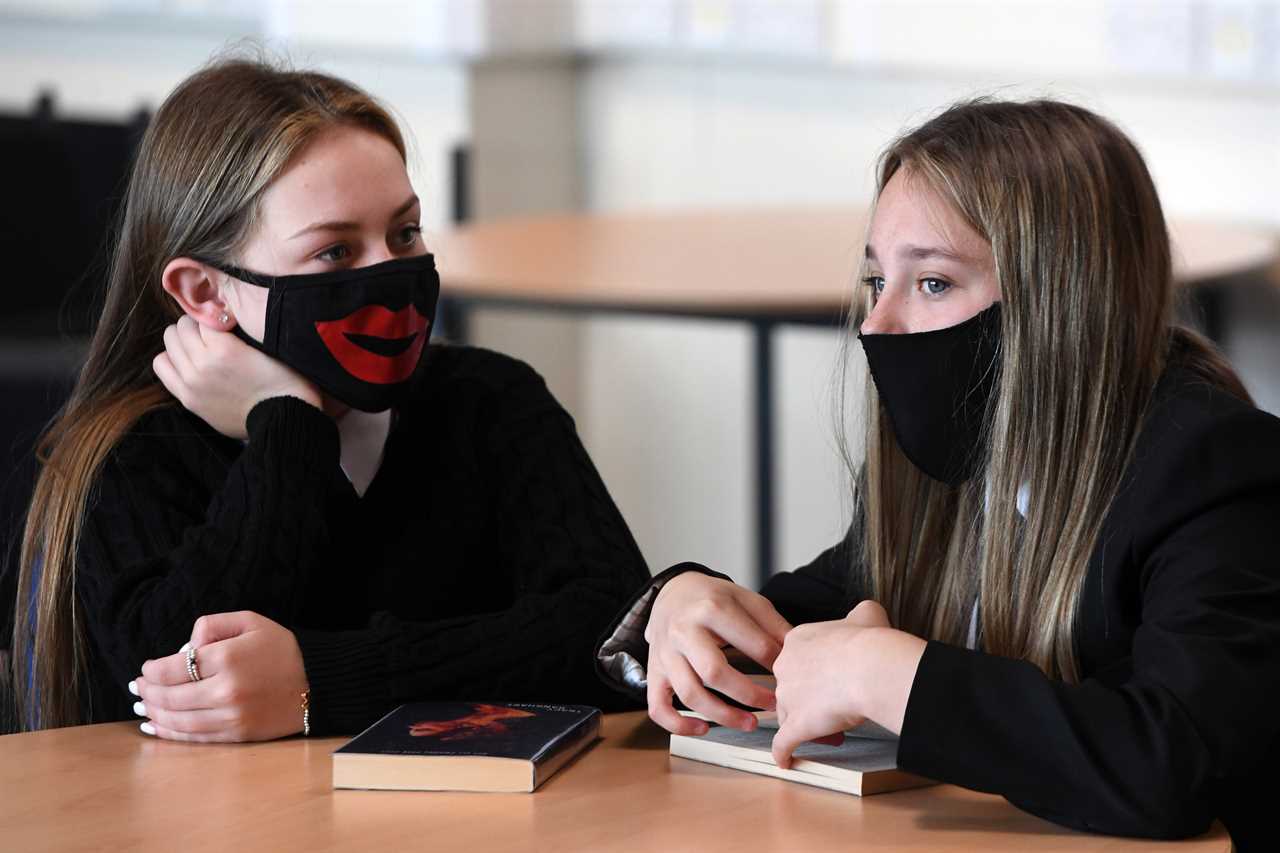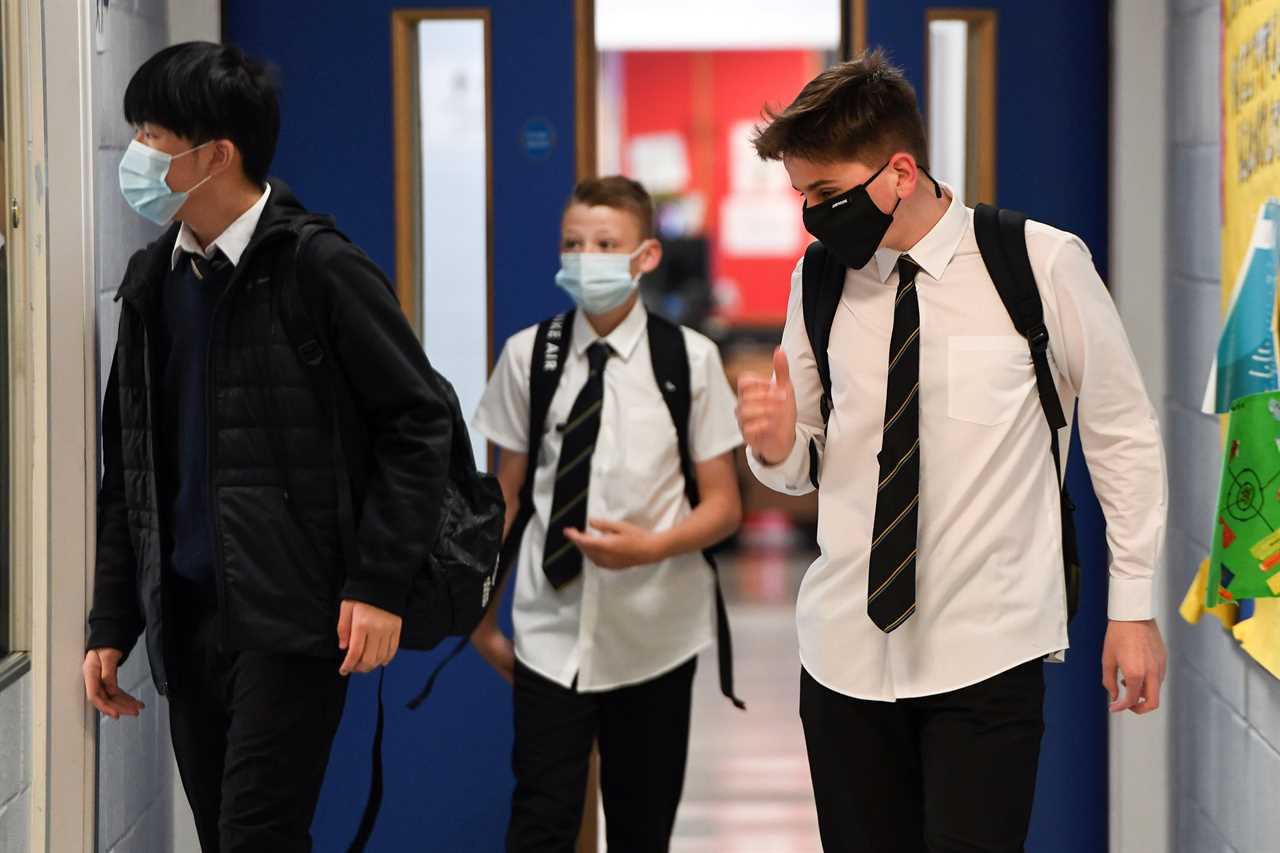CONFUSION is growing over whether the new Covid strain is worse in children.
Scientists appear to be divided over whether the new variant causes more cases than the “original” one.

Members of a Sage subcommittee said yesterday children may now be “on a more level playing field” with adults when it came to risk of being infected.
However, other scientists said today this was only “speculation” because there is a lack of data to study the impact on children.
The variant – named VUI 202012/01 – is sweeping across the UK, and scientists say it spreads 70 per cent more easily.
Cases are mostly focused in the South East, including London, leading to swathes of those regions being forced into Tier 4 – essentially lockdown – days before Christmas.
Children are expected to return to school in January after the festive break, but the PM sounded doubtful at last night’s press briefing.
Boris Johnson said the Government wants secondary school pupils to return to face-to-face lessons in a staggered way in the new year if they “possibly can”.
So what do we know about children and the new Covid strain and how it might affect children?
Does the new strain infect children easier?
Scientists are not ruling out that the new variant of the coronavirus finds it easier to infect children than the original one.
This may be due to the mutations it has gained.
Professor Wendy Barclay, head of the department of infectious disease, Imperial College London, aimed to squash fears the latest strain “specifically targets children”.
Instead, it appears they were now “on a more level playing field” with adults in terms of infection susceptibility, she said.
Prof Barclay said one idea was that the new strain was better able to connect with human cells to infect them, making it easier for it to bond to children’s cells where it has struggled before.

She discussed this at a press briefing yesterday, which involved members of the Government’s New and Emerging Respiratory Virus Threats advisory group (NervTag).
Prof Barclay, whose work involves looking at the cells of viruses, said: “We know that SARS-CoV-2, as it emerged as a virus, was not as efficient in infecting children as it was adults, and there are many hypotheses about that.
“If the (new) virus is having an easier time of finding an entrance cell then that would put children on a more level playing field.”
She added: “Therefore children are equally susceptible perhaps to this virus as adults, and therefore given their mixing patterns, you would expect to see more children being infected.
“It’s not just the viruses specifically targeting them, but it’s just that it’s now less inhibited, if you like, to get into the children.”
What evidence is there of this?
So far, the only evidence that this strain infects children more is because there are more cases.
The strain is becoming the dominant cause of cases in young people.
But this is the case in adults, too.
Professor Neil Ferguson, of Imperial College London, said the proportion of cases caused by new strain in under 15s, compared to the original one, was “significantly higher”.
He said at the NERVTAG briefing: “There is a hint that it has a higher propensity to infect children … but we haven’t established any sort of causality on that, but we can see that in the data.”
The new variant caused an estimated 62 per cent of cases in London in the week to December 9, 59 per cent in the East and 43 per cent in the South East.
The data from the Office for National Statistics is not broken down into age brackets.
There have been a surge in cases in children in the past few weeks, which led to mass rapid testing being deployed in London.
On December 10 – just days before the new strain was announced – the Health Secretary Matt Hancock said “by far” the fastest rise in coronavirus infection rates in the worst hit regions in the South East was in 11 to 18-year-olds.
Councils across London to ask schools to close due to staff shortages. But the Government ordered them to stay open.
How strong is the evidence the strain is worse for children?
At this stage, it is not very strong.
And Prof Ferguson admitted more research needed to clarify if the higher proportion of cases in children caused by this variant had any significance, or was just a result of a growing outbreak.
COG-UK, the scientific group that discovered the variant, don’t appear convinced.
Judith Breuer, professor of virology at University College London told journalists at a briefing today that it is “possible” the variant is better able to bind to cells in children.
But she added: “I have no knowledge of that, it’s complete speculation.
“I’ve not seen any data to show it is being more transmitted in children… It’s all speculation as far as I can see.”
She said she was sure Prof Barclay was looking into this further after her comments yesterday.
But given that human coronaviruses, like the common cold, generally infect children easily, Prof Breuer said “it wouldn’t surprise me if SARS-CoV-2 will eventually spread quite freely amongst children”.

The scientist said: “We don’t have much data on children.”
However, her colleague Professor Sharon Peacock, director of COG-UK, contested this, saying the samples they collected from Covid cases were “representative” of the population and the group are “not undersampling” youngsters.
The group take genetic material from the swabs of people with Covid positive test results under Pillar 1 (hospital patients) and Pillar 2 (the community).
It could be argued that because children show less symptoms, they are tested less frequently, and therefore are not as represented in the data.
It is not clear why the scientists had different views on this.
Prof Breuer said the “enormous rise” in cases could have been down to the way people were behaving, rather than it having a better ability to spread.
“But I think all of that has now been accounted for, and it’s very clear there is a very significant rise in the prevalence of this variant, and this is likely to be due to biological factors of this variant and increased transmissibility.”
Does the new strain cause more severe disease in children?
There is no evidence so far the new strain causes more severe Covid disease, or death, in people generally.
Diving into this topic more, Prof Breuer said: “Im not aware of any children that have been admitted to hospital with the variant.”
Professor Chris Whitty, the Chief Medical Officer for England, said that “urgent work” was under way to confirm if the strain causes more severe illness or death.
He warned that it was “more vital than ever” that people continued to take action to reduce the spread of the virus.
Even if the new strain is no more deadly than the original one, experts say if it has the ability to spread faster it will be harder to control.
This could be a nightmare for schools, which currently operate “bubbles” across school years or classrooms, so that if a child tests positive, the bubble self isolates at home.
Fears of schools staying shut
It comes amid worries schools will stay shut in the New Year following Christmas break.
Boris Johnson was yesterday unable to promise schools in England could reopen as planned, adding measures were kept “under constant review”.
The Prime Minister told a Downing Street press conference children would return to the classroom if they “possibly can”, as the spread of the mutant strain of the virus gathers pace.
The Government announced secondary school and college pupils’ return to class in England will be staggered in the first week of January to help schools roll out mass testing of students.
But a coalition of education unions and organisations have warned that many schools will not be able to get the testing system in place by January 4.
Britain’s largest teachers’ union – the National Education Union (NEU) – have written to Prime Minister Boris Johnson and Education Secretary Gavin Williamson to call for all students to be kept at home over the first two weeks of January to get mass testing set up.






